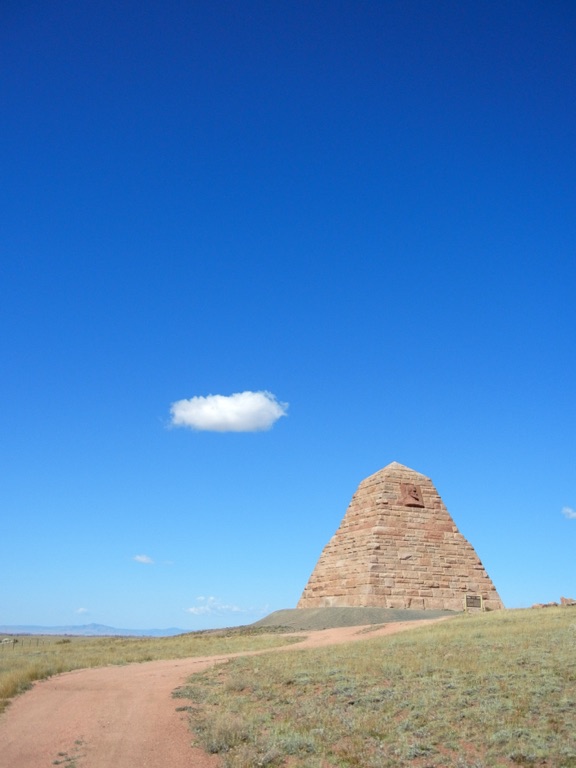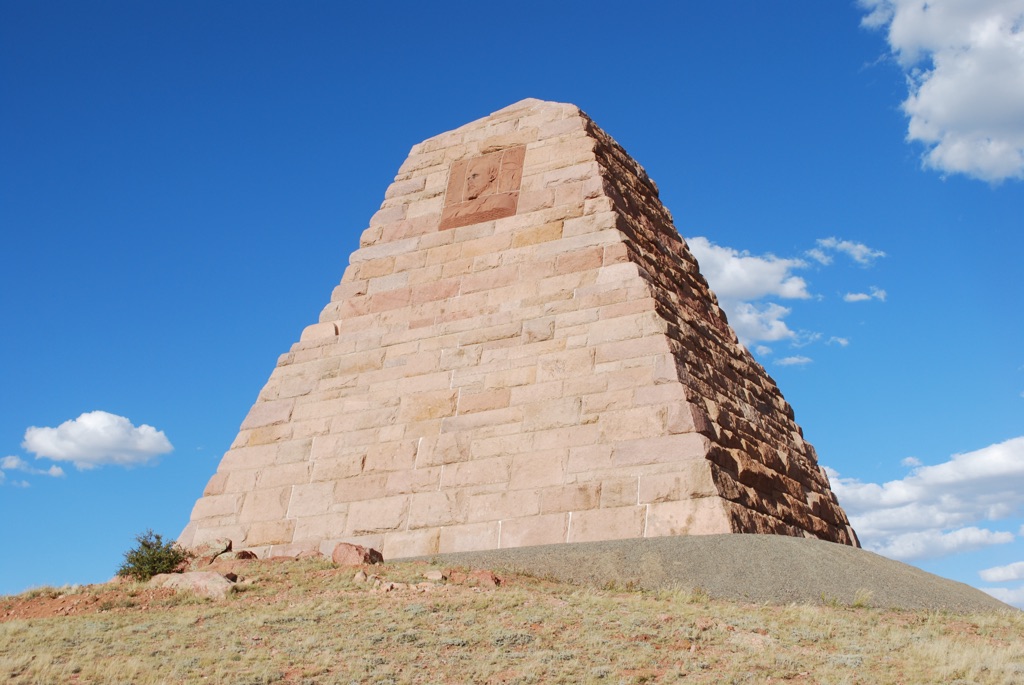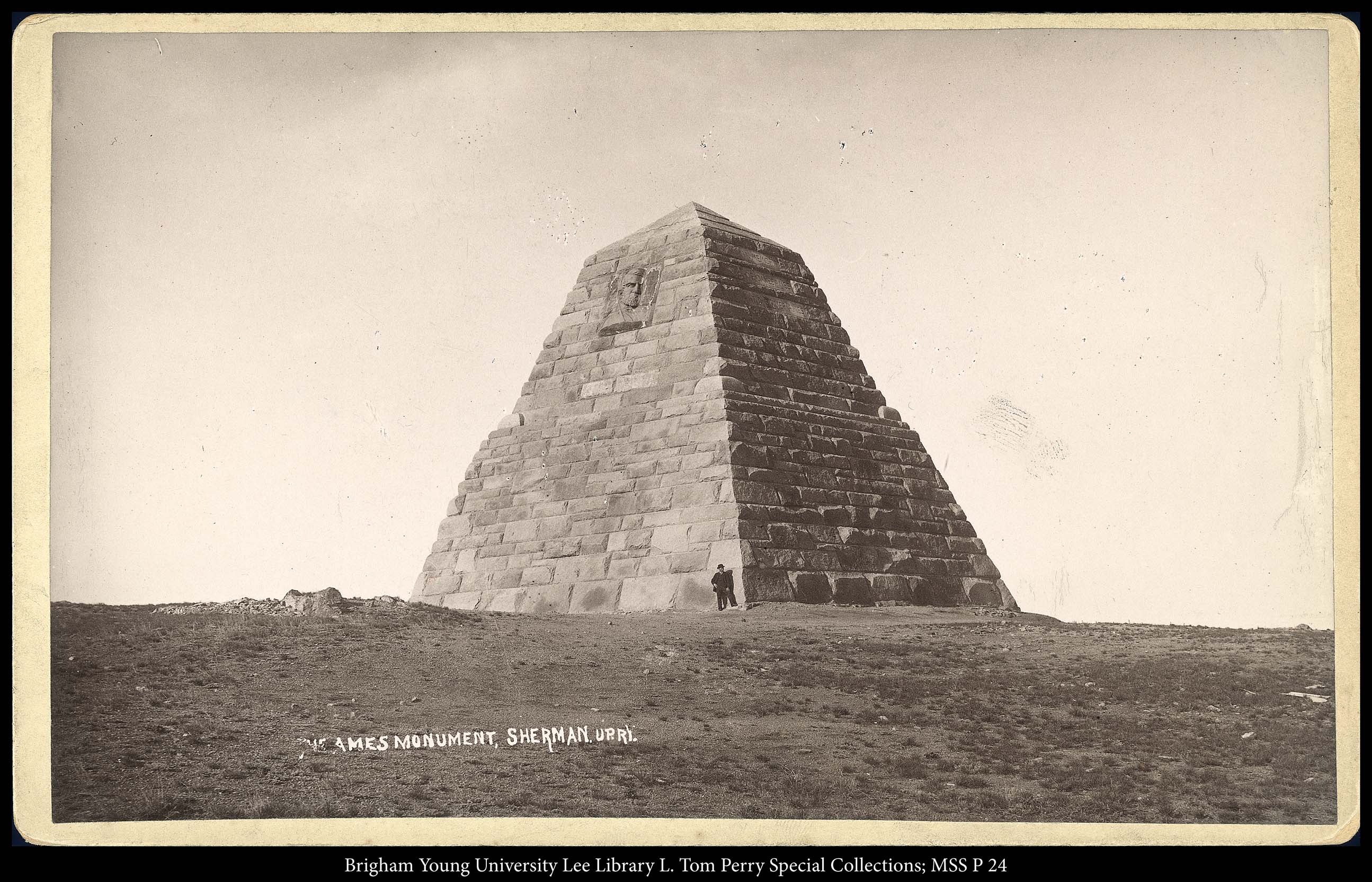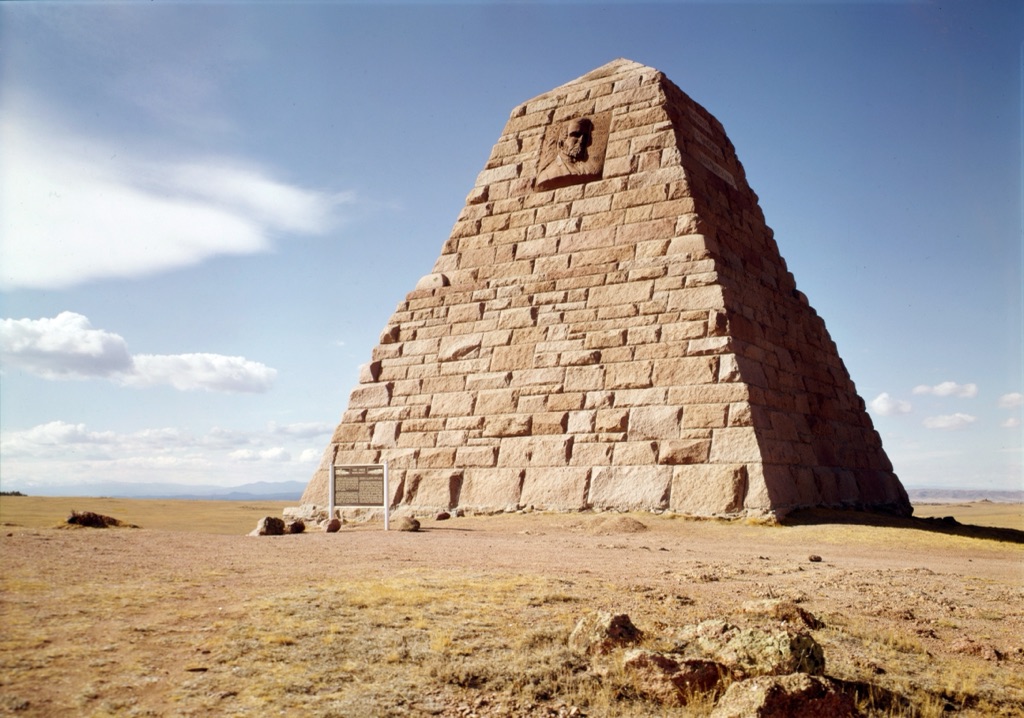The Ames Monument is a historical landmark located in southeastern Wyoming. It stands as a tribute to the Ames brothers, Oakes and Oliver, who played a crucial role in the construction of the First Transcontinental Railroad. The monument, designed by the famous architect Henry Hobson Richardson and sculpted by Augustus Saint-Gaudens, is a pyramid constructed of granite. It was completed in 1882 and symbolizes the significant contribution of the Ames brothers to the United States’ westward expansion and the development of the railroad system.
Get your dose of History via Email
Historical Background of Ames Monument
The Ames Monument was built to honor Oakes Ames and his brother Oliver, two influential figures in the Transcontinental Railroad’s completion. The railroad was a monumental project that connected the east and west coasts of the United States. The Ames brothers, through their company, played a pivotal role in its construction. However, their involvement was not without controversy, as the Credit Mobilier scandal tarnished their reputation. The monument was erected after their deaths as a form of redemption and recognition of their contributions.

Henry Hobson Richardson, a prominent architect of the time, designed the monument. He chose a pyramid shape for its durability and symbolism of longevity. The construction began in 1880 and was completed two years later. The site chosen for the monument was near the highest point on the Transcontinental Railroad, symbolizing the Ames brothers’ lofty achievements.
No one inhabited the monument, as it was intended as a memorial rather than a residence. However, it has stood the test of time and remains a significant historical site. The monument has not been the scene of any major historical events since its construction but continues to be a point of interest for historians and tourists alike.
The monument’s location was once a bustling area due to the nearby railroad. However, as the railroad lines shifted, the monument’s surroundings became more desolate. This isolation has helped preserve the monument, keeping it free from urban development and maintaining its original setting.
Today, the Ames Monument is not only a historical site but also a testament to the architectural and artistic styles of the late 19th century. It stands as a reminder of the industrial progress of the era and the complex legacy of the individuals it commemorates.

About Ames Monument
The Ames Monument stands at 60 feet tall, with a square base measuring 60 feet on each side. It is constructed entirely of granite, quarried from nearby areas, ensuring the structure’s endurance against harsh weather conditions. The pyramid shape was a deliberate choice by Richardson, symbolizing stability and permanence.
At the heart of the monument’s design is the collaboration between Richardson and the sculptor Augustus Saint-Gaudens. Saint-Gaudens created the bas-relief portraits of the Ames brothers, which adorn the monument. These portraits are a key artistic feature, showcasing the brothers in a dignified manner and serving as the focal point of the structure.
The monument’s construction was a feat of engineering and craftsmanship. Workers had to transport the heavy granite blocks to the remote site, which was a significant challenge given the limited technology of the era. The precision with which the blocks were cut and assembled is a testament to the skill of the workers involved.

Architectural highlights of the Ames Monument include its rustic appearance and the use of Romanesque elements, a signature of Richardson’s design style. The rough-hewn granite blocks give the monument a sense of solidity and timelessness, while the detailed carvings and inscriptions add a layer of elegance and historical context.
Despite its remote location, the monument has attracted visitors for over a century. It serves not only as a historical marker but also as an example of American architectural prowess in the late 19th century. The monument’s design and construction methods have been studied by architects and historians, contributing to its status as a significant cultural artifact.
At a glance
Country: United States
Civilization: American
Age: Completed in 1882 AD
Conclusion and Sources
Reputable sources used in creating this article include:
- Wikipedia: https://en.wikipedia.org/wiki/Ames_Monument
- Wyoming Historical Society: https://www.wyohistory.org/encyclopedia/ames-monument

